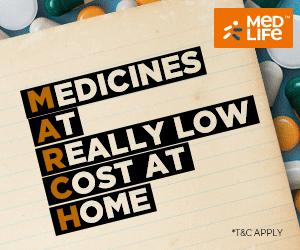Whether you're trying to reduce your risk, navigating treatment options or moving on to survivor status, this is what you need to know.
Consider this list your crash course in prevention.
1. Opt Out of a Few Happy Hours
Women who have a daily glass of alcohol are 5% to 9% more likely to develop breast cancer. Some research shows even less puts you at risk, so make three drinks per week your cutoff, suggests Marisa Weiss, MD, chief medical officer of breastcancer.org.
2. Avoid Smoking
The carcinogens in cigarettes up your risk of pretty much every type of cancer. Having a specific plan before you try to quit could make all the difference. Visit smokefree.gov/build-your-quit-plan to learn more.
3. Go Fish
Ingesting too many omega-6 fatty acids (found in vegetable oil and many processed foods) and too few omega-3s (in salmon and canned albacore tuna) can lead to inflammation and may raise your cancer risk, says Katherine Crew, MD, director of the Clinical Breast Cancer Prevention Program at Columbia University.
4. Get Real
About ExerciseTo cut risk, post-menopausal women in particular should be active three to four hours a week; five to seven is even better. “It’s work to take care of yourself!” says Weiss, who is also director of breast health outreach at Lankenau Medical Center in PA.
5. Keep a Close
Eye on the ScaleBeing overweight after menopause increases your risk by 30% to 60%. In addition to exercising, Weiss suggests eating a mostly plant-based diet.
6. Rethink Hormone Therapy
Treating menopause symptoms with combined estrogen/progestin therapy raises breast cancer risk substantially. Try non-hormonal solutions to manage symptoms. If you need hormonal meds, consult with your doctor to ensure you’re on the lowest dose for the shortest duration.
Should you be on a preventive drug?
If you’re at high risk, chemoprevention (taking an estrogen-blocking medication) could cut your chances of getting breast cancer in half. Yet only 5% of women in this group—including those with a BRCA mutation or strong family history—are offered the option. Why? Some women are concerned about possible side effects, such as hot flashes and blood clots. But the biggest challenge is lack of information. “In my study, half the high-risk women who would be eligible for chemoprevention had never even heard of it,” says Tasleem Padamsee, PhD, an assistant professor at the Ohio State University College of Public Health. Ask your doctor to calculate your risk score, and if your lifetime risk is higher than 20%, preventive medicine may be worth considering.It's not always a lump.
Lumpectomy and radiation or mastectomy are still pretty standard—and sometimes paired with chemo. But your doctor may suggest additional or alternative approaches.4 Treatment Options You Should Know About
Lumpectomy and radiation or mastectomy are still pretty standard—and sometimes paired with chemo. But your doctor may suggest additional or alternative approaches.1. Watchful Waiting
It’s controversial, but some women with DCIS (ductal carcinoma in situ, an early-stage cancer that hasn’t spread outside the milk ducts) may postpone treatment in favor of more vigorous screening. The reason: Their cancer might be so small and slow-growing that it never becomes invasive. However, predicting which cancers will lie low and which will turn aggressive is really a guessing game, says Elisa Port, MD, chief of breast surgery at The Mount Sinai Hospital in New York. She advises that patients pursue this option only within the confines of a closely monitored clinical trial.2. Chemo First, Then Surgery
Sometimes a pre-surgery biopsy shows that a cancer will respond well to a particular chemotherapy agent. If that’s the case, you might be able to have chemo first—which could shrink the tumor enough so that you need a less extensive surgery afterward.3. Targeted Therapy
“Breast cancer treatment has become very personalized,” says Anne Kelly, NP-C, at the Leonard P. Zakim Center for Integrative Therapies at Dana-Farber Cancer Institute in Boston. One of the first steps is to figure out what type of cancer you have and then determine treatment. For example, if your cancer has receptors for estrogen or progesterone (ER-positive or PR-positive), you’ll likely be given hormone therapy, such as tamoxifen, raloxifene or an aromatase inhibitor.4. Experimental Treatment
Joining a clinical trial can be the best way to access cutting-edge treatments. “It’s often the standard treatment versus the standard plus the newest opportunity, so you’re not missing out on anything,” says Port, who is also director of the Dubin Breast Center. Ask your doctor or visit cancer.gov/about-cancer/treatment/clinical-trials/search.Do you really need a double mastectomy?
One in six women diagnosed with breast cancer have both breasts removed. Yet for most of them, this extensive surgery won’t improve their chances of survival, according to research. “Breast cancer does not tend to spread from one breast to the other,” explains Reshma Jagsi, MD, co-author of the study, which was published in JAMA Surgery this year. If the cancer is going to recur, it’s much more likely to show up in the liver, bones or brain—and more extensive breast surgery won’t prevent that from happening. Your best bet is to take medications designed to eradicate cancer cells that may have escaped from the breast. If you’re eligible for these drugs, you’ll be given them whether you choose a lumpectomy or a double mastectomy. Unless you already have cancer in both breasts or are carrying a BRCA mutation, “choosing lumpectomy followed by radiation is not shortchanging your treatment in any way,” says Jagsi.Soften side effects
If you require chemo, your doctor will probably prescribe medications to deal with side effects, but you could also consider adding integrative therapies to the mix. Acupuncture is probably the best-studied for easing chemotherapy side effects. “It’s incredibly helpful for pain, nausea, fatigue and neuropathy,” says Kelly.4 Steps to Get Your Life Back on Track


















No comments:
Post a Comment